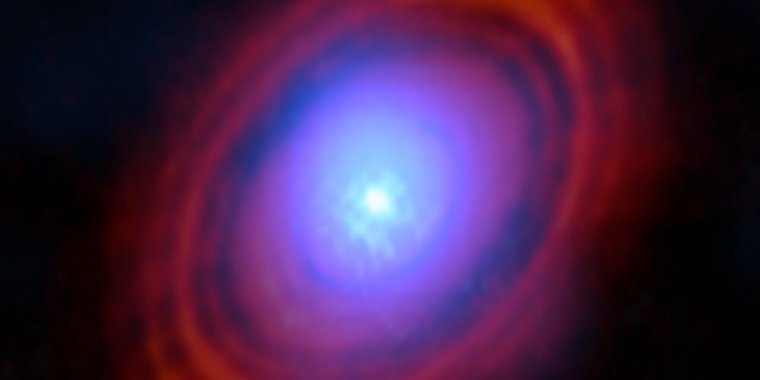| News / Space News |
Astronomers reveal a new link between water and planet formation
Researchers have found water vapour in the disc around a young star exactly where planets may be forming. Water is a key ingredient for life on Earth, and is also thought to play a significant role in planet formation.

Water in the HL Tauri disc. Photo: ESO
Yet, until now, we had never been able to map how water is distributed in a stable, cool disc — the type of disc that offers the most favourable conditions for planets to form around stars. The new findings were made possible thanks to the Atacama Large Millimeter/submillimeter Array (ALMA), in which the European Southern Observatory (ESO) is a partner.
“I had never imagined that we could capture an image of oceans of water vapour in the same region where a planet is likely forming,” says Stefano Facchini, an astronomer at the University of Milan, Italy, who led the study. The observations reveal at least three times as much water as in all of Earth’s oceans in the inner disc of the young Sun-like star HL Tauri, located 450 light-years away from Earth in the constellation Taurus.
“It is truly remarkable that we can not only detect but also capture detailed images and spatially resolve water vapour at a distance of 450 light-years from us ,” adds co-author Leonardo Testi, an astronomer at the University of Bologna, Italy. The ‘spatially resolved’ observations with ALMA allow astronomers to determine the distribution of water in different regions of the disc.
“Taking part in such an important discovery in the iconic HL Tauri disc was beyond what I had ever expected for my first research experience in astronomy,” adds Mathieu Vander Donckt from the University of Liège, Belgium.
A significant amount of water was found in the region where a known gap in the HL Tauri disc exists. Ring-shaped gaps are carved out in gas- and dust-rich discs by orbiting young planet-like bodies as they gather up material and grow.
“Our recent images reveal a substantial quantity of water vapour at a range of distances from the star that include a gap where a planet could potentially be forming at the present time,” says Facchini.
This suggests that this water vapour could affect the chemical composition of planets forming in those regions.
Observing water with a ground-based telescope is no mean feat as the abundant water vapour in Earth’s atmosphere degrades the astronomical signals.
ALMA, operated by ESO together with its international partners, is an array of telescopes in the Chilean Atacama Desert at about 5000 metres elevation that was built in a high and dry environment specifically to minimise this degradation, providing exceptional observing conditions.
“To date, ALMA is the only facility able to spatially resolve water in a cool planet-forming disc,” says co-author Wouter Vlemmings, a professor at the Chalmers University of Technology in Sweden.
“It is truly exciting to directly witness, in a picture, water molecules being released from icy dust particles,” says Elizabeth Humphreys, an astronomer at ESO who also participated in the study.
The dust grains that make up a disc are the seeds of planet formation, colliding and clumping into ever larger bodies orbiting the star. Astronomers believe that where it is cold enough for water to freeze onto dust particles, things stick together more efficiently — an ideal spot for planet formation.
“Our results show how the presence of water may influence the development of a planetary system, just like it did some 4.5 billion years ago in our own Solar System,” Facchini adds. (ESO)
YOU MAY ALSO LIKE





